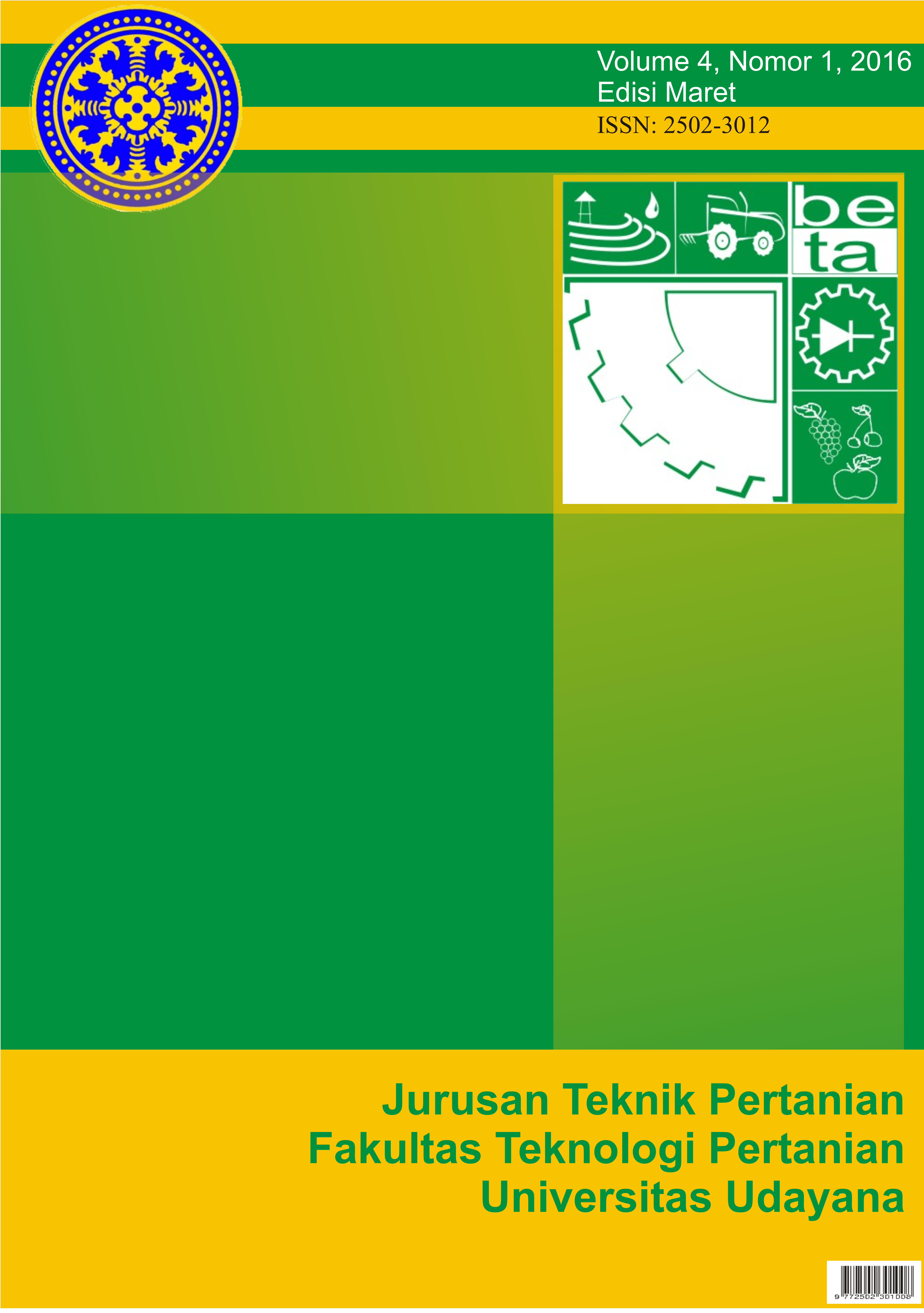Pengaruh Suhu Terhadap Karakteristik Pengeringan Rebung Bambu Tabah (Giganthochloa nigrociliata Kurz)
Abstract
Bamboo tabah shoots is a product with high level of water which is 91% and easily damaged after harvested, so the advanced handling was need to keep the quality and storage period. One method is by drying. The purpose of this research is to study the effects of temperature the drying characteristics of bamboo tabah shoots. According from this research, bamboo tabah shoots was dry by oven and used 5 points of temperatures as the way of treatment. This research was using data from weighing the mass of material within drying process to obtain decreasing of moisture content and drying rate in bamboo tabah shoots. The temperature of drying that used in this research were 50?C, 55?C, 60?C, 65?C, and 70?C. From this research known that the drying temperatures have the effects to the result of the drying characteristics, but have no effect to the physical characteristics of drying bamboo tabah shoots. The lowest drying rate that found from the objects that was dried using 50?C is 31,82%db/hour which was dried for 32 hour with the final water level 9,38%wb and the highest dried rate found from the object that was dried using 70?C is 72,04%db/hour which was dried for 18 hour with the final water level 9,74%wb. The drying rate increased by the increase of temperature
Downloads
References
Brooker, dan Donald B. 1974. Drying Cereal Grains. The AVI publishing Company, Inc. Wesport.
Hall, C. W. 1957. Drying and Storage of Agriculture Crops. The AVI Publishing Company, Inc. Westport, Connecticut.
Kencana, Pande Ketut Diah. 2009. “Fisiologi dan Teknologi Pascapanen Rebung Bambu Tabah (Gigantochloa Nigrociliata Kurz) Fresh Cut”. Fakultas Pertanian. Universitas Brawijaya. Malang.
Kleinhenz, V. and D. J. Midmore. 2002. Improved Management Practices for Culinary Bamboo Shoots, RIRDC (Rural Industries Researc and Development Corporation). Sydney
Pamungkas. 2009. Sejuta Manfaat Rebung. (Online) (http://id.shvoong.com, diakses 20 Maret 2012).
Sumarno, Alim. 2015. Pengaruh Subtitusi Tepung Rebung dan Penambahan Tahu Terhadap Mutu Organoleptik Nugget Mureta. Skripsi S1. Program Studi Tata Boga Fakultas Teknik Universitas Negri Surabaya. Surabaya
Susanto, T. dan B. Suneto, 1994. Teknologi Pengolahan Hasil Pertanian. Bina Ilmu, Surabaya.
Taufiq M, 2010. Pengaruh Temperatur Terhadap LajuPengeringan Jagung Pada PengeringKonvensional Dan Fluidized Bed. Skripsi. Fakultas teknik universitas sebelas maret surakarta.
Widjaja, E.A. 1991. Arevision of Malesian Gigantochloa (Poacea Bambosoidae). Reinwardtia, Vol 10, Part 3, 1987 : 291 – 380 Susanto, T. dan B. Suneto, 1994. Teknologi Pengolahan Hasil Pertanian. Bina Ilmu, Surabaya.












 Jurnal BETA (Biosistem dan Teknik Pertanian)
Jurnal BETA (Biosistem dan Teknik Pertanian)


